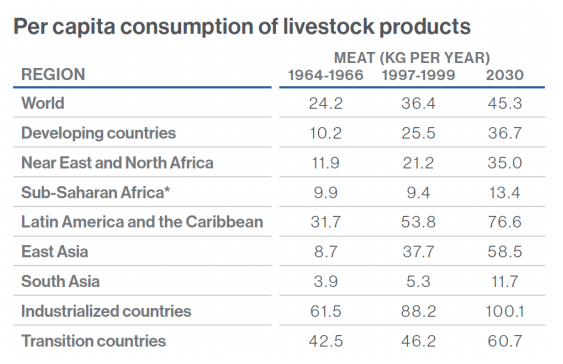As protein demand grows with the rising population so does research surrounding how the agriculture industry could be reshaped over the next decade. A recent analysis by the Association of Equipment Manufacturers takes an in-depth look at 13 trends that could inform the way food is produced. AEM’s look at the Future of Food Production includes the following findings.
According to The Food and Agriculture Organization of the United Nations (FAO), per capita food consumption has been on the rise since the 1960s. While some of this increase can be attributed to a shift from roots and tubers to livestock products, the increase in kcal consumption per day is also due to an overall increase in protein consumption as people earn more income and move to urbanized areas.
As populations soar, so does animal protein consumption. The FAO projects that annual meat production is on a trajectory to achieve a 72% increase in 2030 compared to 1999. With populations on the rise, demand for animal protein is expected to double by 2050.
Plant-based meat alternatives are also on the rise. NielsenIQ reports that sales increased 60% from 2019-2021, largely due to improvements in taste, price, and availability. Additionally, Grande View Research predicts that the global market will expand at the compound annual growth rate of 19.3% from 2022-2030. And yet, plant-based meats just have a small portion of the overall meat market. Data from the Plant Based Food Association suggest that roughly 2.7% of retail packaged meat sales in 2020 were plant-based meats.
While demand for all types of protein continues to expand, so do opportunities for American farmers to provide quality, nutritious food to meet the growing global consumption needs.

